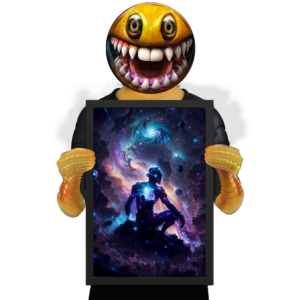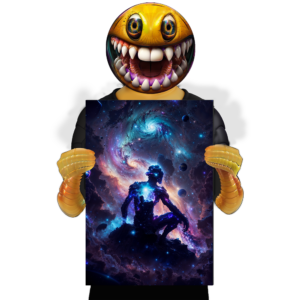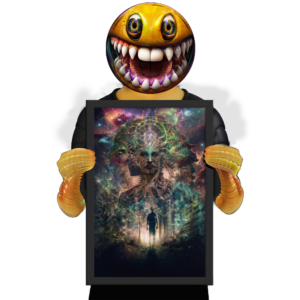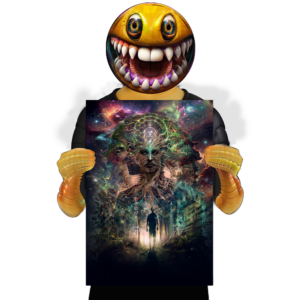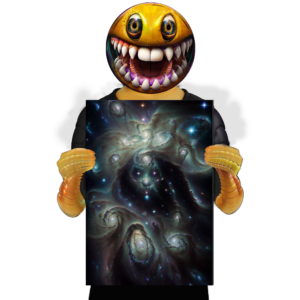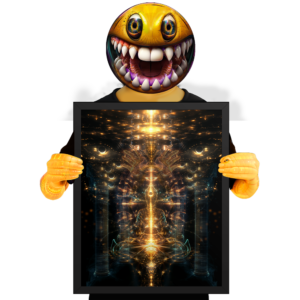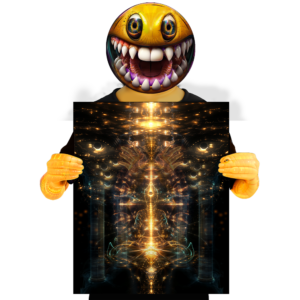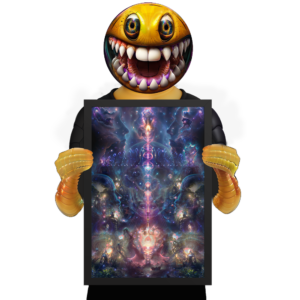
Summary:
As a child, I found a spiderweb with a grasshopper trapped in it and asked: should I save it? This simple question unraveled a lifelong inquiry into moral ambiguity, sacred violence, and the illusion of separateness. Through this story, we examine how experiences are not as clear cut as our initial observations, how we operate from a collection of delusion, and why sometimes there is nothing to do but sit with things
Reading Time: 8 minutes
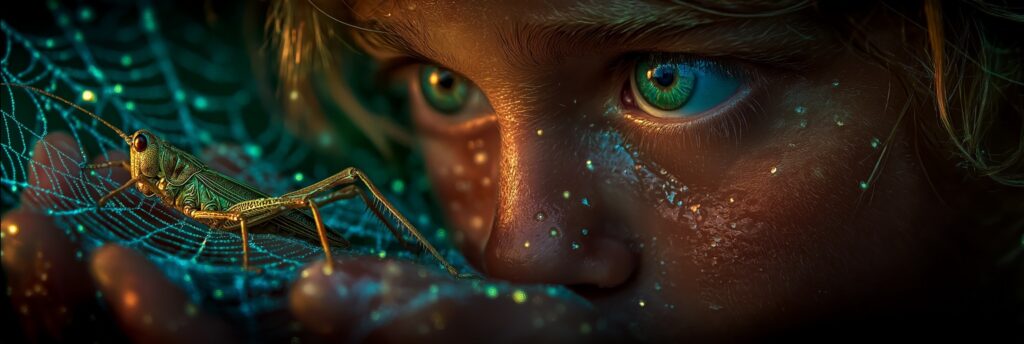
The Moment That Sparked It All
As a young child I became trapped in a thought, perhaps my first real philosophical pondering.
I came across a spiderweb with a grasshopper trapped in it.
My initial thought was to save the grasshopper. Then it occurred to me that the spider would go hungry & I questioned why I prioritized the grasshopper’s life.
Isn’t life as precious to the spider as it is the grasshopper?
Then, thinking of the spider’s hunger I wondered if I should catch more grasshoppers & feed the spider.
As I thought:
“To save the grasshopper is to starve the spider. To feed the spider is to doom the grasshopper”, it occurred to me, “Maybe there is nothing to do here.”
Maybe nothing is out of place; not the spider, not the grasshopper, and not my thoughts for the potential of both of their suffering
How do we decide who to condemn and who to place on a pedestal?
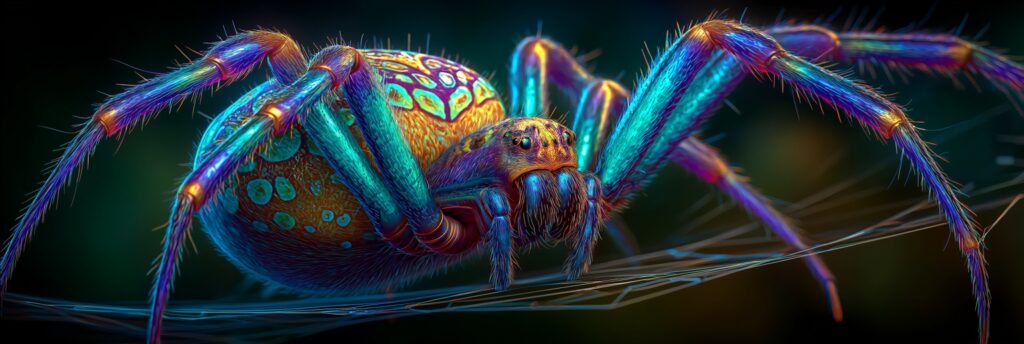
The Web of Morality: No Clean Heroes
Both answers feel like compassion. To save is compassionate. To let be is compassionate. But each also contains a kind of cruelty.
What we call “morality” can often be just a matter of which side of the web you’re standing on.
- From the grasshopper’s view, the spider is a predator.
- From the spider’s view, the grasshopper is lunch. Neither is morally corrupt.
- Both have a drive to survive.
Taking the perspective of the spider, I align with the hunger to survive, even if it means another must perish. Is it wrong to fight for my life when the cost is someone else’s? If so, is the moral choice to starve, to willingly give up my existence for another’s?
Taking the perspective of the grasshopper, I honor the will to live without being consumed by another’s need. I cause no harm simply by wanting to live. Yet, my survival may doom the spider. If I escape, the spider may starve, or find another victim. Even if I sacrifice myself, the spider will soon hunger again.
Their fates are tied together
We want to label one the victim, the other the villain, but life rarely gives us clean stories. It gives us a web. And we are always already caught in it.
No life stands apart from another, and no act of salvation is free from consequence
Like the web itself, morality is not a line, it is a pattern.
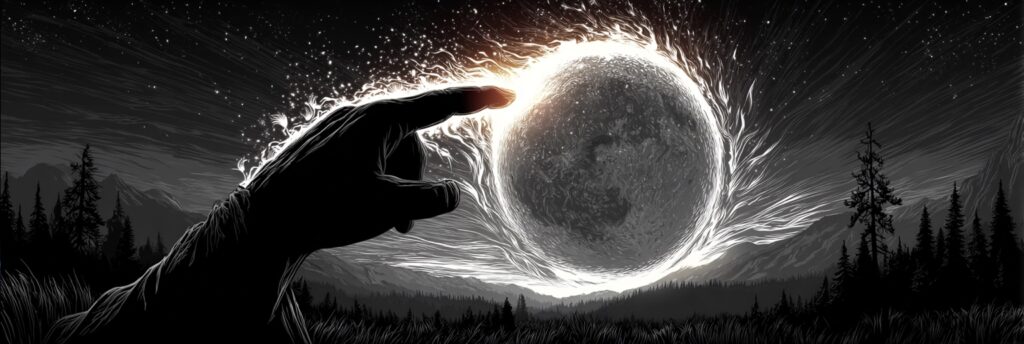
All Concepts Are Delusions (But Some Are Useful)
The mind is an obsessive line-drawer, with a need to place things on one side or the other
It divides the seamless fabric of reality into this/that, self/other, good/evil, spider/grasshopper, all in a desperate attempt to make the infinite manageable.
People have a challenging time trying to entertain multiple ideas especially when they are competing notions, and we need a system to put things into clear cut manageable chunks as to not be overwhelmed, but the truth of reality is not that simple.
So in trying to reduce the world into these manageable chunks we create distortions and delusion, and these delusions become the foundation we use to analyze and engage with the world.
Sometimes we lose sight of the fact that these chunks, or symbols aren’t a true equivalent to the experiences they represent.
In a way all concepts are delusional. It’s just that some delusions are more useful than others.
A map is not the environment it represents, but the map is an indispensable guide.
These aren’t delusions because they are necessarily false, but rather they are incomplete. The totality and oneness of any experience cannot be reduced to these chunks or symbols like words. These reductions “chop off the edges or relevant details and contextual cues” so it will fit in the box we choose.
Those choices are biased by already established delusions. These reductions, referencing other previously established reductions as a foundation, destroy clarity and distort perception through a compounding lack of context.
Delusions arise when we mistake the label for reality itself.
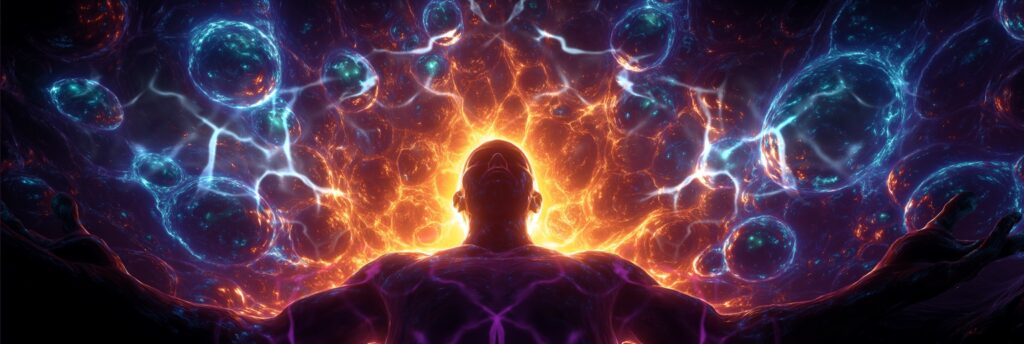
The First Illusion: “I” as Separate
It seems the idea of an individual self apart from the totality of things is the seed of this line drawing
There exists only what is, the is-ness, the totality of all things. For a number of reasons it has been biologically advantageous for us to carve ourselves out from this totality. This is simply another “useful delusion” that prioritizes our continued existence as an individual
The belief that “I” exist as something apart from everything else, is the first delusion, the first border drawn in the sand of consciousness.
The moment “I” arise, the world splits. What’s good for me vs. not. What affirms me vs. threatens me.
I feel the idea is best captured by a song I wrote:
“All your thoughts of me and mine have got you living in fear, but without the line that “I” draws, the perception becomes so clear. That there is no math in the world. You think you’re adding to sums. Well, addition was never a thing until division was done”
At the root of all these divisions is the most primal line:
The separation of self from the whole.
In other words, there is no “you” in the way you imagine. And so there are no victims or villains either at least, not in the grand cosmic sense.
Just patterns playing out.
The wave never sins against the sea.
Predator and Prey Are Perspectives
Villain and victim are roles we cast others into based on our own narratives, traumas, and conditioning.
At first glance, the grasshopper looks like the victim. Trapped, helpless, devoured.
But zoom out.
The victim of one story is the villain of another.
Grasshoppers are voracious consumers of plant life.
From the plant’s perspective, or a farmer’s, the grasshopper is an apex predator.
The spider could be seen as a guardian of diversity and sustainability, preventing monocultures and collapses of delicate environments that come from unchecked prey.
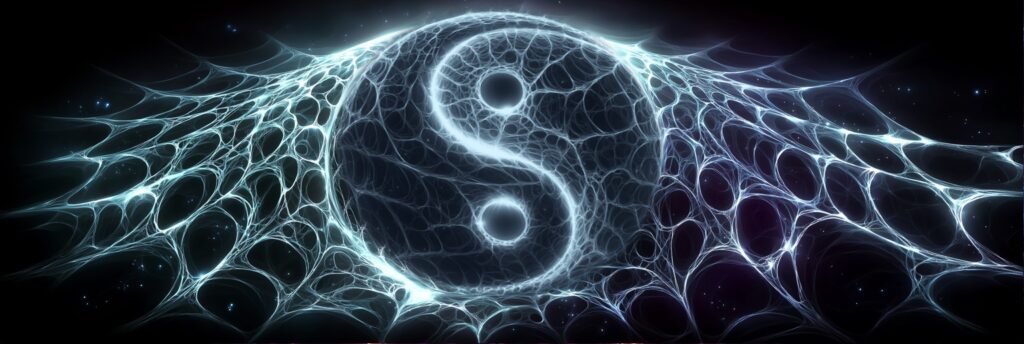
Sacred Violence
To wish for a world without suffering is noble, but can only really exist as a concept. To remove all suffering is a task that to accomplish is to unmake life as we know it.
You cannot remove suffering. You can only transfer it, and are you really so wise of a being to understand the implications of placing it elsewhere.
Maybe you would transfer it to a place that doesn’t bother your senses, or a place that allows you to feel like a savior, ignoring who or what now bares the load.
To think we can always be the grand arbiters in this immensely vast and complex living entity that is the cosmos is hubris, and from the outside it likely seems like a child trying to help their mother in the kitchen without understanding what is even happening. So they just make a giant mess instead.
It’s Not a Bug in the System. It is a Feature
In the current mode of existence, where individuality, survival, and form arise, some level of harm is woven into the breath of being.
Remove it entirely, and nothing can breathe.
In this view, spider and grasshopper are not enemies. They are nodes in a great, breathing pattern, interdependent, co-arising.
Nature isn’t cruel or kind.
It simply is, flowing in patterns that keep the whole alive.
Beyond us chopping the whole thing up there is just the is-ness and everything else is just a story we are telling to try and wrangle with our place among it
If the spider never kills the grasshopper, it starves.
If the grasshopper never consumes the plant, it dies.
If the plant grows unchecked, it overtakes the system and strangles out all diversity.
This isn’t evil. It’s sacred.
This is not a broken world. This is a breathing world.
There is a kind of sacred violence woven into the very fabric of life, where harm and nourishment are two faces of the same eternal process.
The cosmos, in a delightfully dark sort of joke, might best be described as a masochistic cannibal, lovingly chewing its own flesh, over and over, forever.
Life eats life. This is not a flaw in the system. This is the system.

Nothing is Out of Place
Life feeds on life.
The hand that gives is the same hand that takes.
The eater and the eaten wear the same face, they just take turns wearing it.
I truly believe nothing is out of place in this world; not the outrageous horrors of the world, or our distaste for them. Each thing is exactly in place in that moment in a way we can’t escape.
Something bad happening? That is in its proper place in this moment in time?
You feel that you can’t stand for it and must do something? That is in its proper place in this moment?
You do something to change things? That is in its proper place.
You let things be exactly as they are? That is in its proper place in this moment.
Maybe things aren’t as clear cut as they seem
So…That’s a Lot of Words. What Do We Do With Them?
Does this mean we should turn a blind eye?
Maybe it means we learn to sit with complexity, and we don’t rush to act without understanding.
Maybe we just need to refresh our thinking models
Our initial impulses, whether to save the grasshopper, to feed the spider, or to simply care aren’t wrong, but they are incomplete.
There is no removing suffering, only moving it, and often not where we expect.
Compassion is powerful. However it’s shaped by the narratives we weave, and compassion without clarity is cruelty in disguise
Maybe the truth is this:
There’s nothing to fix, only something to witness;
a web already woven, and you already part of it.
None of them are out of place.
Not the spider.
Not the grasshopper.
Not your concern for either.
Maybe we should ask ourselves:
- What feeling arises within me when faced with this experience?
- What narratives are coloring my assessment of this situation?
- Can I sit with this?
- Can I witness the totality without reaching for the scissors of judgment?
- Can I love this trembling, terrible, beautiful dance without trying to stop the music?
Because in the end, nothing is out of place. All of it, every trembling atom of it, is precisely what it must be to be it.
If you enjoyed reading this please take a second to share it with your friends on social media
Come join the conversation on social media and share your thoughts.
SHOP PRINTS
-
Cosmic Contemplation (Framed photo paper poster)
$75.00 -
Cosmic Contemplation (Photo paper poster)
$60.00 -
Cosmic Wilderness (Framed photo paper poster)
$75.00 -
Cosmic Wilderness (Photo paper poster)
$60.00 -
Divine Mother (Framed photo paper poster)
$75.00 -
Divine Mother (Photo paper poster)
$60.00 -
Inner Temple (Framed photo paper poster)
$99.00 -
Inner Temple (Photo paper poster)
$75.00 -
Our Story (Framed photo paper poster)
$75.00
